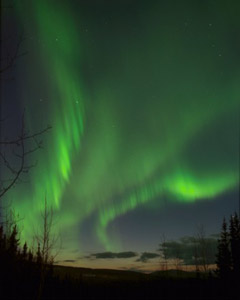Green curtains of the aurora borealis (Northern Lights) appeared in the skies over Alaska in this photo from April 2001.
Click on image for full size
Image courtesy of Jan Curtis.
The Aurora
The polar aurora is
formed when
Field-Aligned currents (FAC's) short-circuit through the atmosphere. Particles from the Sun
traveling along magnetic field lines collide with particles in the atmosphere. The atmospheric particles become electronically excited from the collision. Relaxing into their normal state obviously requires a release of energy. We see this energy release as
colored light and call it aurora.
The aurora is also known as the northern and southern lights. From the ground, they can usually be seen where the northern and southern auroral ovals are on the Earth. The northern polar auroral oval usually spans Fairbanks, Alaska, Oslo, Norway, and the Northwest Territories.
During geomagnetic storms, however, more particles impinge upon the atmosphere, and the auroral ovals expand to absorb the excessive energy. The northern polar auroral oval can expand to latitudes of 50 or even 40 degrees. Thus there are times when the aurora can be seen as far south as Michigan, Oregon or even farther south.
Auroral classification is quite complex. In its simplest form, aurora can be broken down into these types: polar auroral (pictured and discussed above), equatorial arcs (pictured in the above image), mid-latitude aurora and the SAR arc.
You might also be interested in:
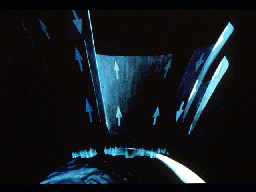
This picture illustrates the streaming of particles into and out of the auroral zone, as Field-aligned currents (FAC's) short-circuit through the ionosphere. Some of the particles entering the auroral
...more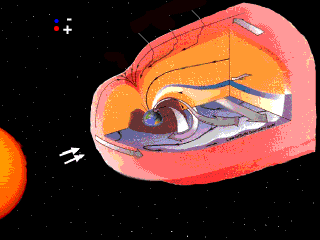
Dangerous particles are not able to penetrate to the Earth's surface but are forced by the magnetic field to move around the Earth. Particles gain entry through the cusps that are shaped like funnels over
...more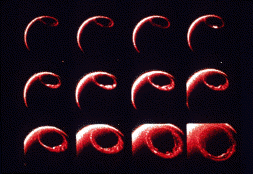
This figure shows a series of images of the auroral oval as it expands over the course of about an hour in response to a geomagnetic storm. This is an animation of the expanding auroral oval.
...more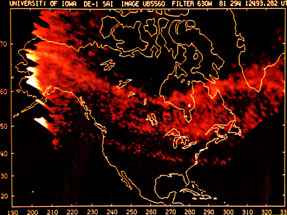
The aurora we are most familiar with is the polar aurora. This is what people are referring to when they speak of the northern or southern lights. But there are other less-known auroral activity, such
...more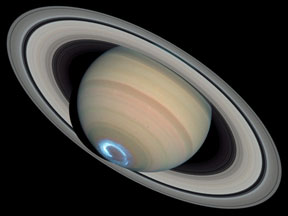
Have you ever seen the Southern or Northern Lights? Did you know that Earth isn't the only planet that puts on these beautiful light shows, also known as the "aurora"? Auroral displays have also been observed
...more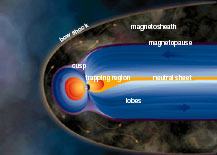
The Earth has a magnetic field with north and south poles. The magnetic field of the Earth is enclosed in a region surrounding the Earth called the magnetosphere. As the Earth rotates, its hot core generates
...more
The thermosphere is a layer of Earth's atmosphere. The thermosphere is directly above the mesosphere and below the exosphere. It extends from about 90 km (56 miles) to between 500 and 1,000 km (311 to
...more


